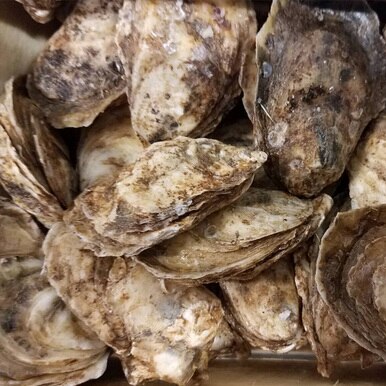Tasting an Oyster
Briny, juicy and plump, oysters are one of the few delicacies that taste like the sea. The subtle differences between the East and West coast varieties are what keep oyster lovers hooked. To be a fully-fledged ostreaphile (an oyster lover) you need to explore the full range of styles and varieties. Luckily, you can explore the different East and West coast varieties at our store (https://sfrhs.com/product-category/oysters/). To help navigate your oyster sampling journey, we have created this comprehensive guide directing you through the nuances of oyster tasting. For those of you who do not like raw seafood, we have the perfect recipe for Oyster Rockefeller [here].
According to oyster connoisseur, Rowan Jacobsen (2008), when tasting an oyster, there are three stages. The first stage involves salt, whereas the second stage body and sweetness, and the third one relates to floral or fruity finishes. Upon first taste, salt hits immediately when you tilt an oyster into your mouth. The second stage goes against the contemporary belief that you should slurp oysters down without chewing as you then miss out on the toothsome pleasure of the oyster. In fact, biting into an oyster should represent a similar experience as biting into a fresh fruit, where there is some initial resistance before breaking. Chewing is what also releases some of the sweetness. The final stage is what is generally known as the finish, which is described as the lingering flavor of the oyster after you have swallowed and chewed. Common finishing for oysters is to pair it with some cucumber and melon.
The 5 species of oysters
There are just five species of oysters cultivated commercially in North America. Each has classic characteristics, although they can be expressed quite differently depending on location and growing conditions. The five species are: Eastern (crassostrea virginica), Pacific (crassostrea gigas), Kumamoto (crassostrea sikamea), European Flat (ostrea edulis), and Olympia (ostra conchaphila).
Our Oysters
We carry Eastern, Pacific, and Kumamoto oysters. When trying each oyster see if you can catch the subtleties in taste as described below:
Beau Soleils (crassostrea virginica) – Clean, light, and refined with yeasty, warm bread aroma. These oysters are pair great with a nice glass of champagne to complement their light sweet flavor.
Fanny Bay (crassostrea gigas) – Smooth with a pronounced cucumber finish. Pairs nicely with a full bodied pinot grias and pinot gricio to really bring out the smoothness of the oyster.
Kusshi (crassostrea gigas) – Petite with an ultra-clean flavor. An effervescent citrus cocktail is a great match for Kusshi’s, as the addition of salt helps the cucumber and grassy notes to shine through.
Kumamoto (crassostrea sikamea) – Petite with a sweet fruity flavor. A nice dry wine pairs nicely with kumamoto’s as the high acidity balances out the oysters salinity.
Oyster Seasonality
Historically, the oyster eating rule of thumb was only to eat oysters in months that end in ‘R’. This was due to the fact that it is only in the warmer months that oysters begin to spawn. Thankfully, farming practices have allowed oysters to be available all year-round, but it is still possible to receive spawny oysters. You can identify a spawning oyster by pricking the meat, and if the liquid looks milky it is a sign that it may be full of gametes.
Oyster Farming & Sustainability
95% of the oysters consumed in the United States are farmed. In the late 1800’s, the combination of overharvesting and increased erosion finished off virtually every natural oyster bed in the United States. Since adopting a variety of aqua cultural practices, farmed oysters have improved the surrounding environment by filtering and cleaning the water in which they grow (Jacobsen 2008). Farmed oysters are ranked as Best Choice across the board by the Monterey Seafood Watch Program.

